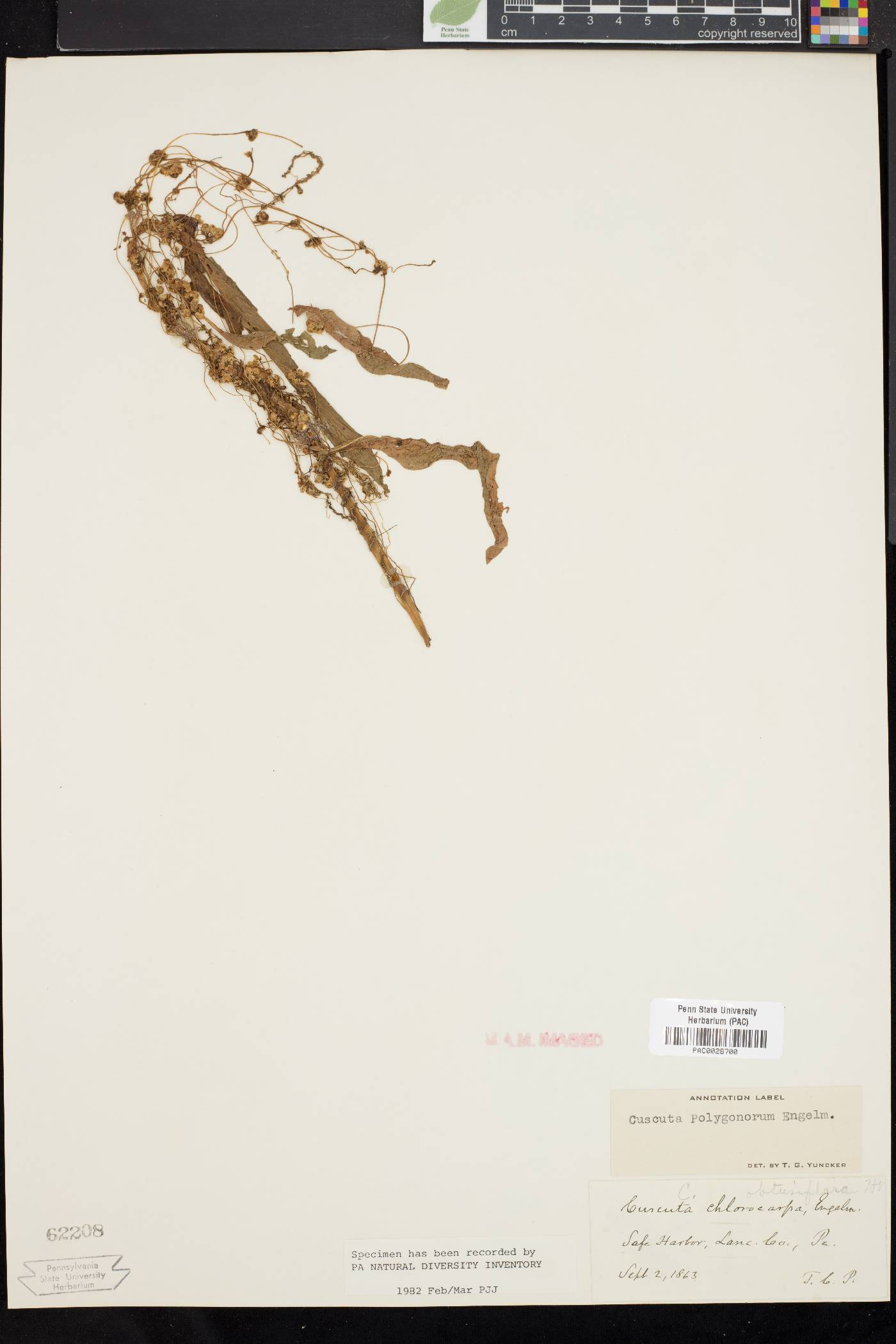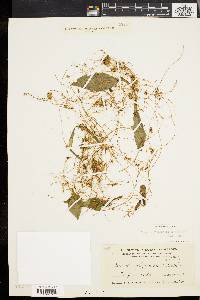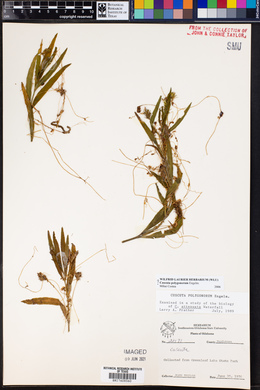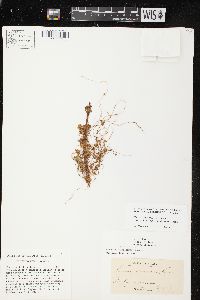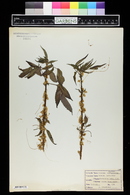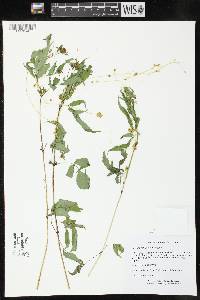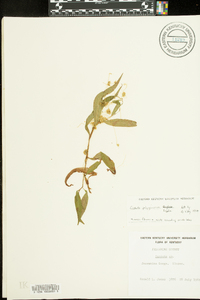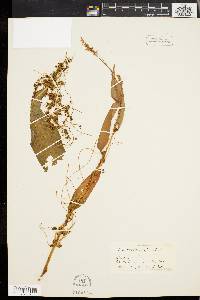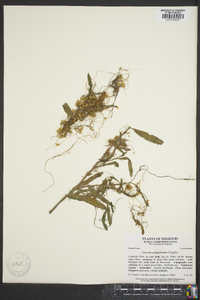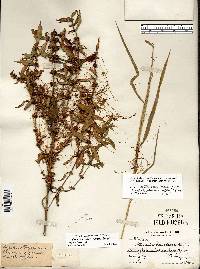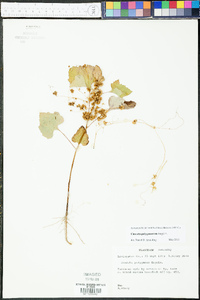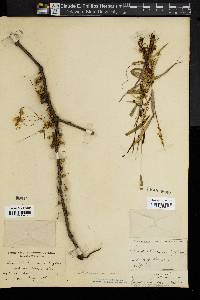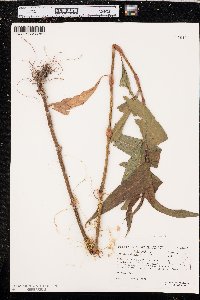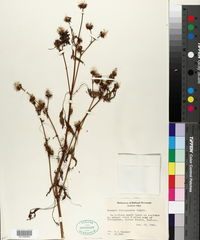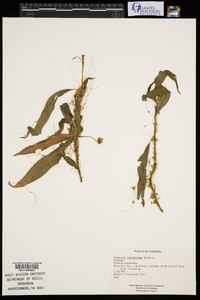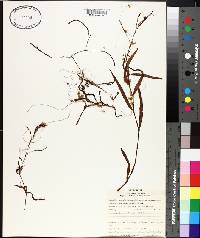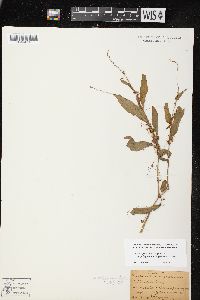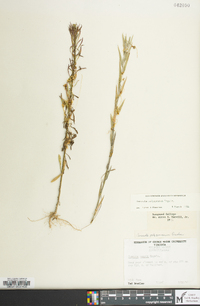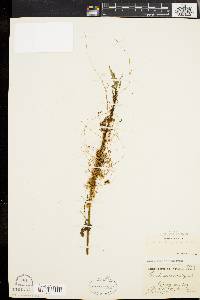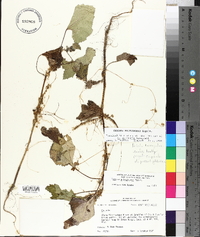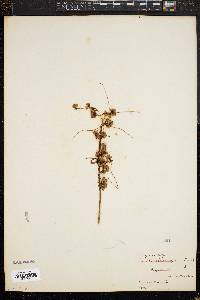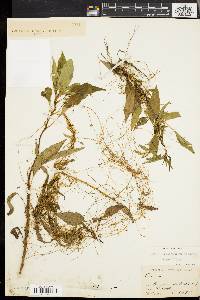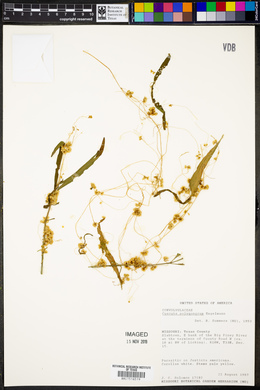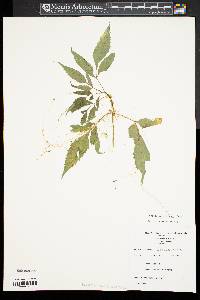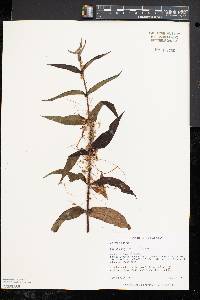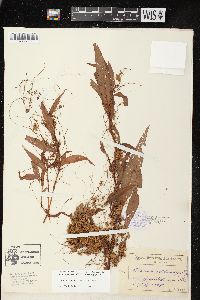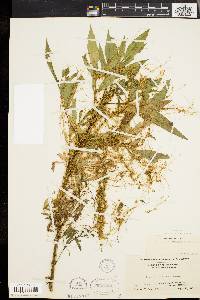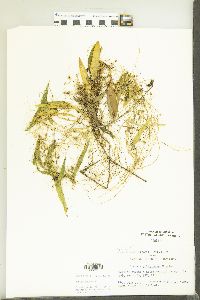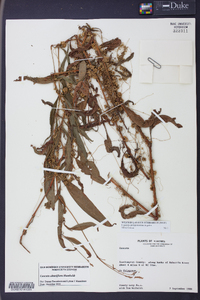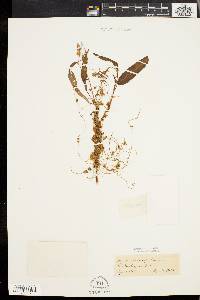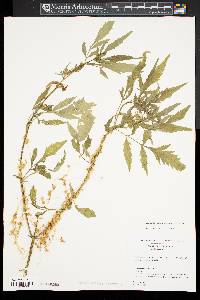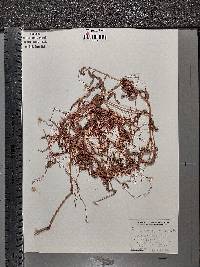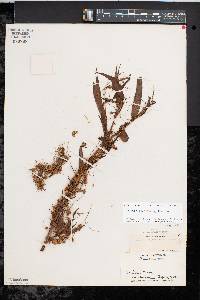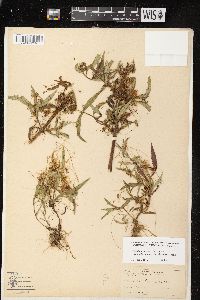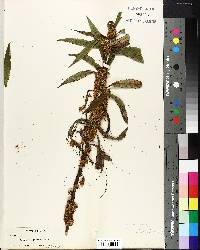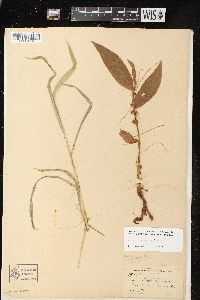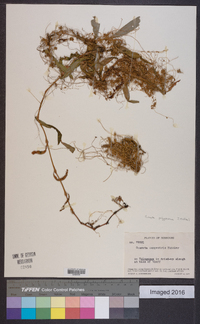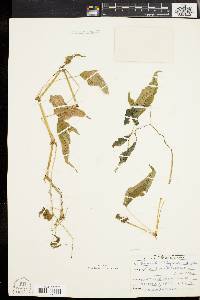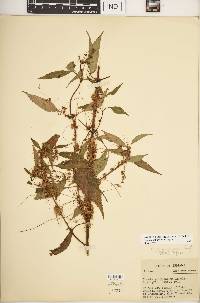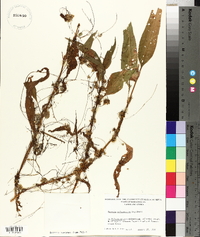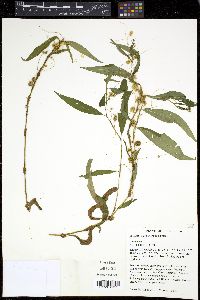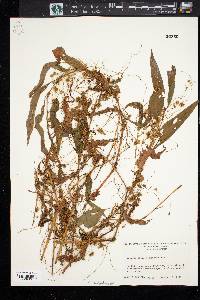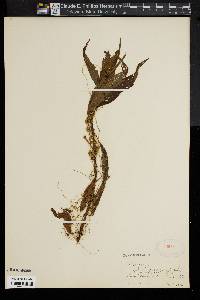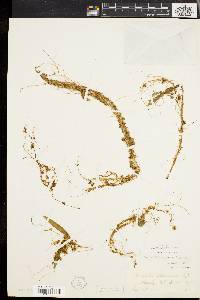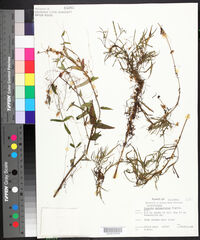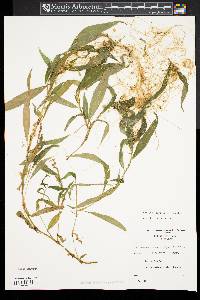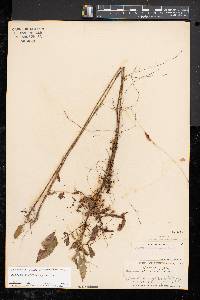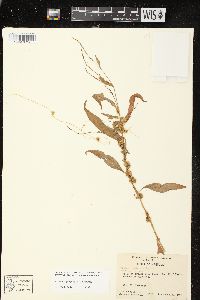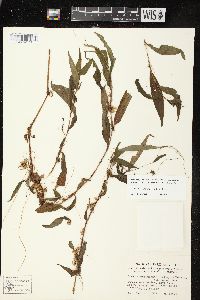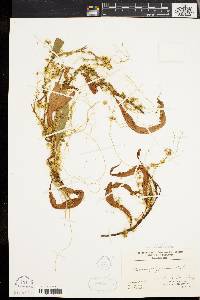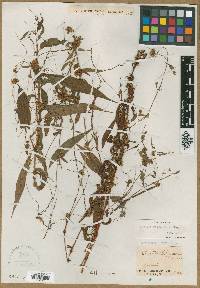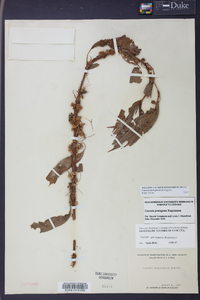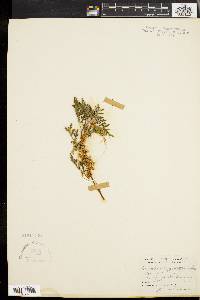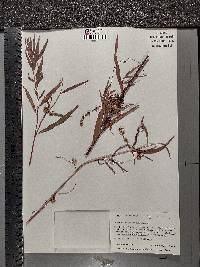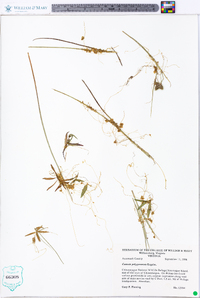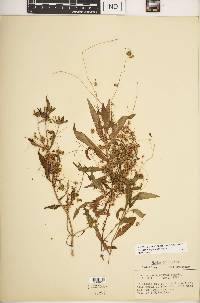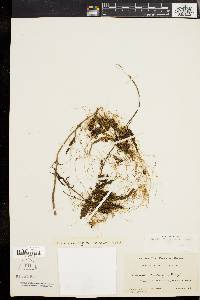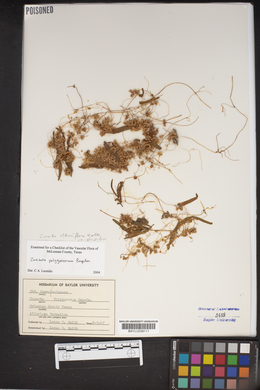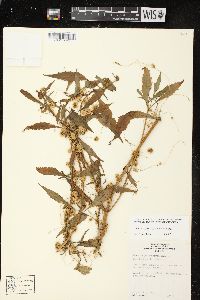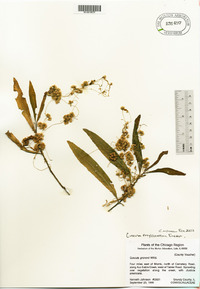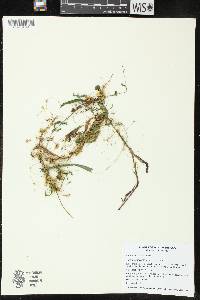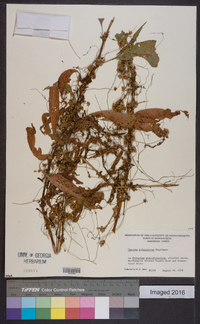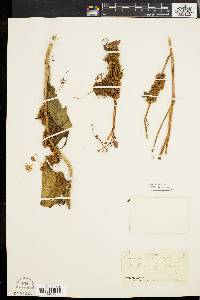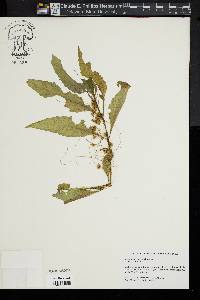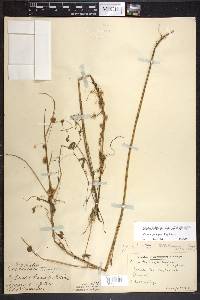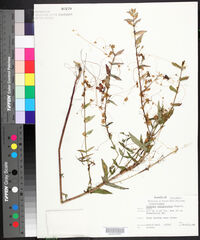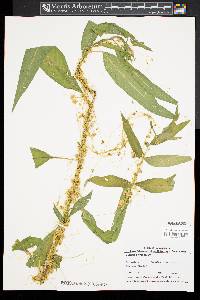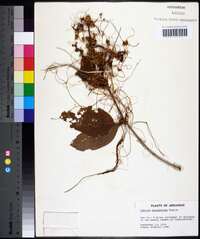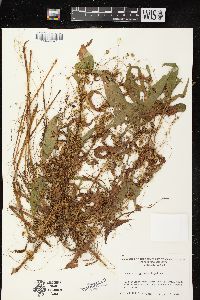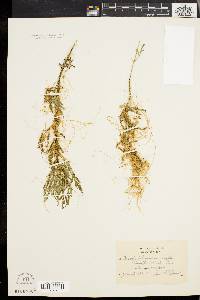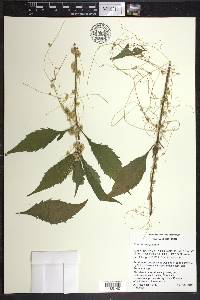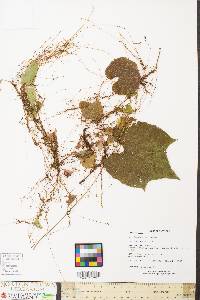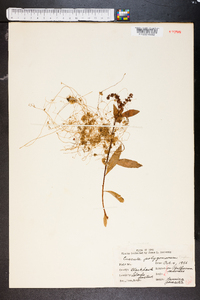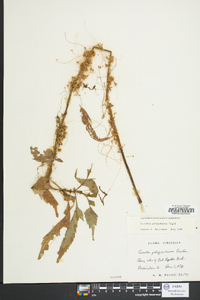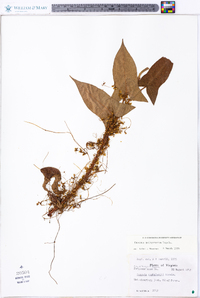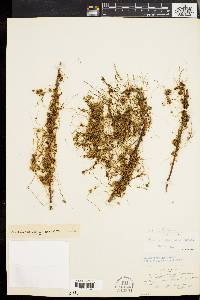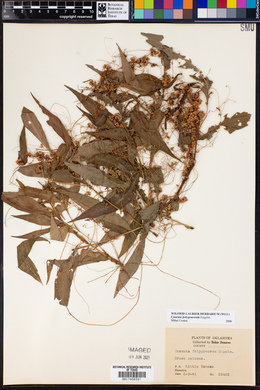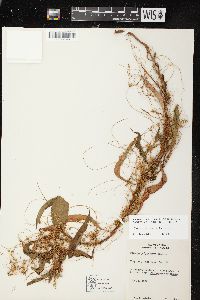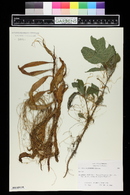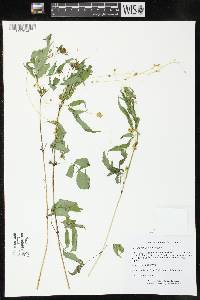
|
|
|
|
Family: Convolvulaceae
Smartweed Dodder
|
Annual parasitic vine over 50 cm long Stem: orange, slender, climbing on other plants and attaching to them with specialized outgrowths (haustoria) which invade tissue of the host plant to absorb food. Leaves: alternate, orange or pinkish yellow, very small, scale-like. Flowers: many, stalkless, white, tiny, 2 - 2.5 mm tall, radially symmetric, somewhat cylindric with four, erect, pointed petal lobes. The flowers are arranged in short-stalked, small (0.5 - 1 cm diameter), dense, rounded clusters along the stem. Sepals: four, but fused at base, then separating into four very blunt and rounded lobes which are at least as long as the petal tube. Petals: four, but fused for up to half their length, then separating into four, ascending to erect, triangular lobes with pointed, erect or ascending tips. The petal lobes are equal to or longer than the petal tube. Stamens: four, attached to inside top of petal tube alternating the petal lobes, with short filaments, and the anthers not extending beyond petal lobes. Pistil: with one, two-chambered, superior ovary; and two, 0.5 - 0.8 mm long styles which end in rounded stigmas. Fruit: small, 2 - 2.5 mm tall, about 3 mm diameter, somewhat rounded, a bit wider than tall, two- to four-seeded, membranous capsules. The withered petal tube remains attached as a cup to the base of the fruit. Similar species: Cuscuta polygonorum is probably most similar to C. cephalanthi, except that species has a much shorter calyx, short and rounded petal lobes, and the petal tube remains attached to the top of the capsule. Cuscuta coryli differs by having stalked flowers with lustrous and pimpled or bumpy petals. The remaining species of Cuscuta in the Chicago Region have flowers with five sepals, five petals, and five stamens. Flowering: July to September Habitat and ecology: Occasional in low wet ground, often growing on species of Polygonum. Occurence in the Chicago region: native Notes: The Cuscutaceae family has only one genus, Cuscuta. The family has often been treated as a subfamily of the Convolvulaceae family since their flower structures are very similar despite their size differences. However, the two families have distinct chemical properties as well as the obvious differences in life style of non-chlorophyll producing, parasitic vines, versus independent, photosynthesizing, green vines and herbs. Etymology: Cuscuta is an ancient Latin name for dodder, probably of Arabic origin. Polygonorum means "of Polygonum", a genus in the Polygonaceae family, possibly referring to the propensity for this species to grow on members of that genus. Author: The Field Museum Fls mostly 4-merous, 2 mm, sessile or subsessile in small, dense clusters; cal as long as or longer than the cor-tube, its lobes very obtuse; cor-lobes triangular, acute, erect or ascending, commonly as long as or longer than the tube; styles very short, 0.5-0.8 mm; stigma capitate; fr cupped at base by the persistent cor, depressed-globose, commonly 2-2.5 mm high and 3 mm thick; seeds 2-4, 1-1.5 mm. N.Y. and Ont. to N.D., s. to Tenn. and Tex. On Polygonum and other hosts. Gleason, Henry A. & Cronquist, Arthur J. 1991. Manual of vascular plants of northeastern United States and adjacent Canada. lxxv + 910 pp. ©The New York Botanical Garden. All rights reserved. Used by permission. From Flora of Indiana (1940) by Charles C. Deam On plants of low ground about ponds and lakes and in low woods. The hosts of my specimens are as follows: 1 on Aster, 4 on Bidens, 1 on Polygonum, and 1 on Xanthium. |

